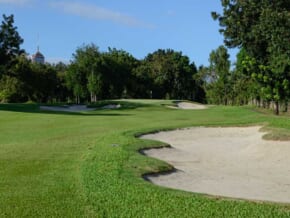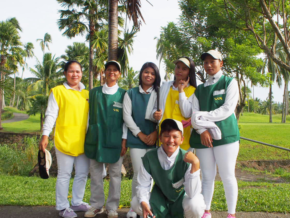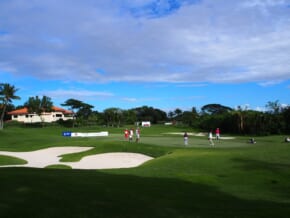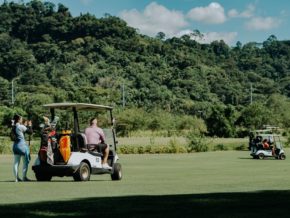Your Ultimate Guide to Cherry Blossoms in Japan This 2019
There are countless ways to enjoy a Japan trip. No one can deny the fact it’s the ultimate dream destination for almost every type of traveler. Whatever the season may be, there’s always a million reasons why a visit to Japan is a must in this lifetime.
 Cherry Blossoms in Goryokaku Park
Cherry Blossoms in Goryokaku Park
One of these reasons is their cherry blossom.
When one thinks of cherry blossom (sakura), the first country that comes to mind is Japan. Come springtime, the country blossoms into an enchanting pink paradise– a scene that makes the country as dazzling as ever.
 The Cherry Tree Corridor in Hokkaido
The Cherry Tree Corridor in Hokkaido
However, not everyone knows that the cherry blossom season varies in different parts of Japan. Not all cherry blossoms bloom at the same time, and not all flowers you see are cherry blossoms. In this guide, we’ll let you know all the essentials when it comes to cherry blossoms–whether you’re a first-timer or not.
Also read: Hakodate: A Blooming Port City of Hokkaido, Japan
When is the best time to see cherry blossoms in Japan?
Springtime in Japan usually starts late March to early May. Like any other travels, it’s important to do research especially when you plan to visit a country for its particular season. Before booking a flight, make sure to check the cherry blossom forecast of your destination. Websites such as Sakura Weather Map and Japan Meteorological Agency give detailed forecasts. Be sure to check it from time to time as forecasts may change depending on the weather.
 Map grabbed from Japan National Tourism Organization. The forecast is subject to change.
Map grabbed from Japan National Tourism Organization. The forecast is subject to change.
If it’s your first time in Japan, here are the most popular tourist destinations and their first bloom/full bloom forecast:
- Tokyo: first bloom on March 20, full bloom on March 29
- Osaka: first bloom on March 27, full bloom on April 4
- Sapporo: first bloom on April 30, full bloom on May 4
- Nagoya: first bloom on March 21, full bloom on March 31
- Fukuoka: first bloom on March 21, full bloom on March 30
- Hakodate: first bloom on March 26, full bloom on March 30
- Hiroshima: first bloom on March 24, full bloom on April 2
- Yamagata: first bloom on April 7, full bloom on April 11
- Kumamoto: first bloom on March 22, full bloom on April 2
- Kagoshima: first bloom on April 27, full bloom on April 5
*Forecast is as of March 20, 2019. View the full list here.
What’s the difference between the flowering date and full bloom, you ask? The former refers to the first bloom, meaning, trees are just starting to grow flowers. Full bloom means that the trees are now filled with flowers.

Also read: Hidden Tokyo: Discover the City’s Lesser-Known Charms
Note: the exact date of sakura season varies every year. It depends on a lot of factors such as its growth and the temperature. This only means that if you’re not able to see it in the spot you wish to visit, you can always travel to nearby places since the sakura season doesn’t start and stop all at the same time.
What is Hanami? How can tourists enjoy it?

You may have seen this word a few times when researching about sakura. Hanami, or flower-viewing, is an actual Japanese tradition to enjoy the flowers; think of “flower sightseeing.” Locals usually go outdoors to appreciate the beauty of sakura by having a picnic with family and friends. Parks are usually filled with tourists at this time. Various events and festivals happen in different parts of Japan.

Also read: Essential Tokyo: Hottest Spots for Every Tourist
Hanami is an old Japanese custom that’s still being done at present. If you want to experience hanami, here are some things to know:
- Check if the place you intend to go to allows hanami. Not all parks allow picnics.
- Bring the hanami essentials: picnic mat, plates and cutleries, folding chairs (optional), and a garbage bag (a must!).
- Make sure to place a reservation as it can get crowded during peak season. Some parks do a first-come, first-serve basis.
- Bring food! Fastfood and other stores offer hanami special bento (packed lunch), during spring.
- Expect long lines at the toilet. Many people will be out, so better do your business before leaving your hotels. You wouldn’t want to waste time lining up at the restroom, don’t you?
Tips for picture-taking
 Filipino TV actor Robi Domingo visited Hakodate in spring 2018
Filipino TV actor Robi Domingo visited Hakodate in spring 2018
Besides hanami, everyone’s main agenda during sakura season is the picture-taking. It’s also the main reason why tourists from different parts of the world go to Japan. You don’t need to own expensive cameras to take photos of these attractive sceneries. Here are some tips to get that perfect shot:

- The best photos are taken during the morning. Natural light makes the flowers brighter and your photos nicer.
- Go a few hours before sunset for the golden hour. It gives a dramatic feel to images.
- Experiment with photo-editing apps! If you want a sakura photo like no other, try using effects that can make your photo stand out.
- Take lots of photos in different angles.
- Night illuminations are best for pictures too. If you plan to bring a professional cam, chances are you’ll get a superb and high-quality photo!
- Be extra! Some parks have rental costumes nearby. Why not try renting a fashionable yukata for a fancy shoot?
Also read: Hirosaki City: The Cultural Heart of Aomori, Japan
 The Weeping Tree
The Weeping Tree
Dos and Dont’s for Travelers
 Tourists at the Hirosaki Castle and Park
Tourists at the Hirosaki Castle and Park
Also read: JAPAN TRAVEL: Fort Goryokaku in Hakodate, A Historical Star-Shaped Citadel
And because spring season is also peak season, expect huge crowds outdoors. Both locals and foreigners go out to enjoy the view, so don’t expect to have all the cherry blossoms all to yourself. As a tourist, you have a responsibility as well. Keep these rules in mind for a hassle-free spring vacay!
- Don’t touch, shake, climb, or vandalize the trees. Doing so will not only make you an annoying tourist, but you might also get in trouble with the law.
- Don’t sit or stand on the roots. Just like the flowers, roots are very fragile too. It might affect the trees’ growth.
- Do wear warm clothing. It can be quite cold during spring, so make sure you wear something comfortable when you’re outdoors.
- Respect others’ spaces. When having a picnic, try to be considerate of the space you’re using.
- Minimize the trash and the noise. Keep your surroundings clean and make hanami a better experience for everyone!
Also read: Explore Japan’s Hokuriku Region through the New Golden Route
 The sakura-covered moat near the Hirosaki Park
The sakura-covered moat near the Hirosaki Park
Planning to visit Japan anytime soon? Share these tips to your friends so they can have a fun vacation!
Source: JNTO, Sakura Weather Map













